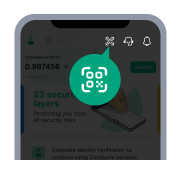Crypto Heist Trial Opens
Two MIT-educated brothers are accused of executing a crypto heist involving a 12-second Ethereum transaction that allegedly transferred about $25 million.
What is the Crypto Heist Trial About?
Who are the Defendants in the MIT Brothers Crypto Case?
The defendants are the Peraire-Bueno brothers, trained at MIT. Prosecutors argue they exploited transaction windows on the Ethereum network, while the defense claims their actions were part of market strategy.
What Charges are Alleged in the Complaint?
Federal prosecutors charge the brothers with conspiracy, wire fraud, and crypto money laundering, alleging $25 million was moved through various wallets and exchanges. The defense argues the transactions were aggressive trading tactics.
Which Court Oversees the Case and What Jurisdiction Applies?
The case is pending in Manhattan federal court, governed by federal fraud and money laundering statutes. Observers believe this could be a test for applying traditional laws to novel on-chain tactics.
When Did the Trial Begin and What is the Timeline?
Key Dates and Court Sessions to Watch
The trial, expected to feature multiple expert witnesses, commenced following an incident in April 2023. The schedule may fluctuate with evidentiary disputes.
Next Hearing Date and Potential Schedules
The proceedings are set to include testimony from blockchain analysts and trading experts, alternating between technical information and legal arguments.
How the Proceedings are Progressing
Early courtroom interactions reveal a division: prosecutors portray a bait-and-switch scheme, while the defense underscores market norms and the absence of direct victim interaction.
How Does the Ethereum Vulnerability Factor into the Case?
Describe the Reentrancy Vulnerability and Its On-Chain Effects
Prosecutors allege the defendants exploited a reentrancy vulnerability to manipulate transactions. Experts will clarify how certain contract behaviors can allow access to pending flows.
Could a Pending Transaction Exploit Have Been Used? Evidence Cited
The indictment refers to a pending transaction exploit within a 12-second window. Defense maintains timing alone does not indicate illicit activity.
What On-Chain and Off-Chain Evidence is Referenced?
Prosecutors rely on blockchain traces and wallet transfers, claiming these link activity. The defense argues the on-chain evidence signifies market interactions rather than covert actions.
What Charges are Alleged and What Evidence is Cited?
Crypto Money Laundering Charges and Related Counts
The government asserts money laundering charges tied to shell companies and foreign exchanges. They plan to trace transfers both on-chain and off-chain.
Evidence Tied to Trading Bot Activity and Market Manipulation
Prosecutors accuse the defendants of using bait transactions to lure automated traders into profitable trades, while the defense claims these were common strategies.
References to Bait-and-Switch Crypto Techniques
A bait-and-switch method is alleged, wherein attractive trades replaced expected assets with illiquid tokens, leaving victims with loss. The defense claims it was market risk, not theft.
What Impact Could the Trial Have on Crypto Regulation and Markets?
Possible Regulatory Responses After the Case
A conviction may prompt increased federal enforcement and new guidelines on automated trading. An acquittal could leave regulators seeking clearer authority for decentralized systems.
Effect on Exchanges, Bots, and On-Chain Security Practices
Exchanges could tighten defenses against predatory bots, with traders updating compliance around high-frequency strategies following the trial.
Market Implications for Ethereum and Related Assets
Legal uncertainty may influence Ethereum-related projects, leading to stronger security reviews and heightened expectations for token listings and audits.
What Comes Next in the Trial Process and Outcomes?
Potential Verdict Scenarios and Timelines
Possible outcomes range from convictions to acquittals, with appeals potentially extending the legal process for months or years.
Appeals, Motions, and Possible Settlements
The defense plans to avoid a quick plea, meaning post-trial motions and appeals are likely. Regulatory actions could also run concurrently, adding complexity.
What Happens if the Defendants are Convicted?
If convicted, the brothers could face prison terms, fines, and asset forfeiture. A conviction would set a precedent for how automated trading and exploits are legally treated.

Comments (0)